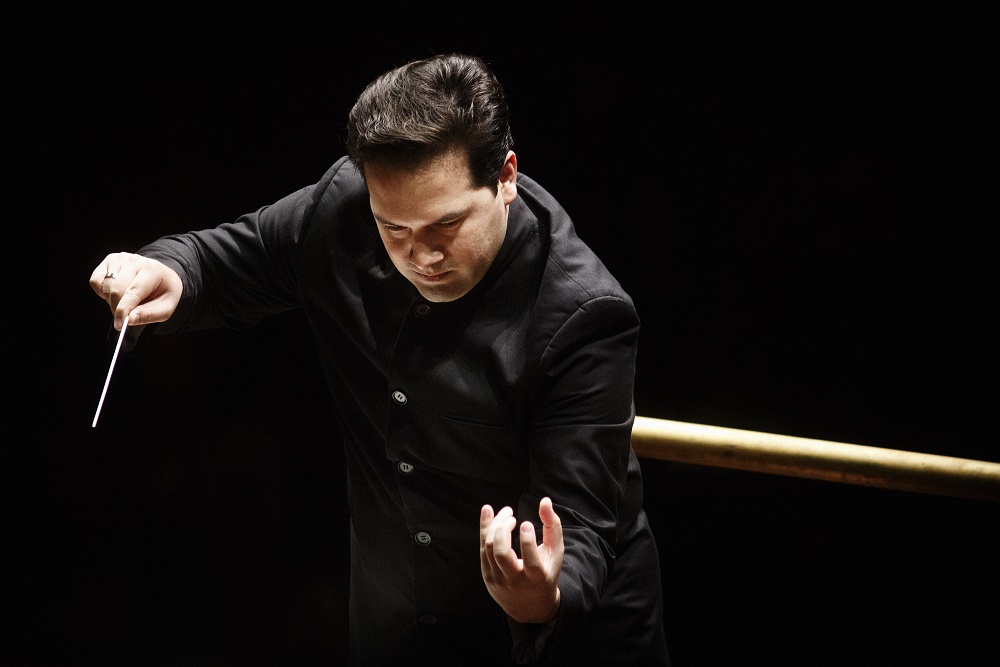 Switzerland Adams, Elgar: Tonhalle Orchestra Zurich / Robert Trevino (conductor). Tonhalle, Zurich, 13.1.2022. (JR)
Switzerland Adams, Elgar: Tonhalle Orchestra Zurich / Robert Trevino (conductor). Tonhalle, Zurich, 13.1.2022. (JR)

Adams – City Noir for Orchestra: I. ‘The City and its Double’; II. ‘The Song is for You’; III. ‘Boulevard Night’
Elgar – Symphony No.1, Op.55
Zurichers are going to hear rather a lot of John Adams’s pieces in the weeks to come, in a total of twelve concerts to be precise; he is ‘Creative Chair’ this season, which does not mean he is ‘Artist in Residence’ although he will hopefully be able to fly over in March to conduct a few of his works.
Adams moved from the East Coast of the United States to California in 1971 and was inspired by the vibrant, not to say violent local street life and the black and white films of the 1940s and 1950s to compose this intriguing work. He delivers his usual easy mix of classic, jazz and blues to achieve contrasts of dark and light, the everyday with the mysterious. The opening movement begins with a raucous mixture of noise and rhythmic fragments. The nervous tension of an empty street in the late evening is evoked, in particular, with the aid of a lone jazz percussionist. In the gentle central movement, Adams begins with a melancholy saxophone melody with jazz and blues undertones. Harp, piano and vibraphone help colour the picture. In the final movement, a trumpet solo conjures up a steamy night and the movement grows into gang warfare on a Hollywood Boulevard (with an unmistakeable nod to The Rite of Spring) inspired by characters from films by David Lynch: the kind who only come out very late on a very hot night.
It is not a symphony and too cacophonous to be film music; more a three-movement tone poem. It was very loud in the smallish confines of the classic Tonhalle. The exciting ending certainly had a ‘wow’ factor. Sterling work from the percussion section, particularly Klaus Schwärzler on vibraphone and Andreas Berger on the drum kit; they can be excused for going over the top. There were also splendid solos from David Bruchez-Lalli (trombone), Philippe Litzler (trumpet), Martin Frutiger (cor anglais) and Mischa Greull (horn).
Texan born American-Mexican conductor Robert Trevino is Music Director of three European orchestras – the Basque National Orchestra in Northern Spain (Bilbao, San Sebastián, Vitoria and Pamplona), the Malmö Symphony Orchestra in Sweden and the RAI National Symphony Orchestra based in Turin. He has become a popular guest at the Tonhalle after jumping in for David Runnicles three years ago with a Mahler Fifth Symphony, and then invited back for a fine Richard Strauss Ein Heldenleben. His Latin temperament was ideal for this energetic piece, which he injected with plenty of rhythmic vigour whilst retaining an eye for the detail.
We really needed a long interval and a drink to cleanse our aural palate before Elgar’s First Symphony, but these still being Covid-restriction times, we were obliged to stay in our seats. Elgar composed it in 1908 at the age of 51, and it was a huge success. In its first year of composition, it was performed no fewer than 84 times in Manchester, London, the US, Vienna, Berlin, Bonn, Leipzig, St Petersburg, Budapest and Sydney. Hans Richter described it as ‘the greatest symphony of the modern age’. It still has the capacity to impress.
The noble theme, which opens the work, was played with proper grandeur and instantly stirred many a British ex-pat’s heart. Trevino grasped the architecture and detail of the work and played it with the volume turned up high. The audience were probably unfamiliar with the work, and – judging by the warmth and length of applause – clearly appreciated it.
I will not here delve into the contentious discussion about whether any particular music can be said to have an English sound; certainly there is an English accent to the work (there is pomp, and the tender sections conjure up Elysian images, perhaps of the Cotswolds); there are, however, also shades of Brahms and Mahler. The final movement has an infectious urgency and swagger before the jubilant ending. This was a fine account of a fine symphony. I hope that Trevino will be invited to return next season to give us his account of Elgar’s Second Symphony.
John Rhodes
